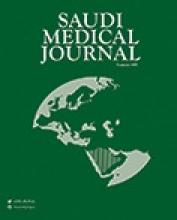Abstract
OBJECTIVE: To compare 3 stimulation protocols in poor ovulation responders undergoing in-vitro fertilization (IVF).
METHODS: The study was a randomized, prospective clinical trial from June 2003 to July 2004, in Royan Institute, Tehran, Iran. One hundred and fifty-four patients, who had poor responses to ovulation induction in at least one previous IVF attempt, were randomly divided into 3 groups. In the first group, human menopausal gonadotropin (HMG) was administered from day 3 of the cycle at a dose rate of 150IU/day. In the second group, gonadotropin-releasing hormone (GnRH) agonist was started at a dose rate of 800ug/day by nasal spray or 500ug/day subcutaneously in the mid-luteal phase, followed by a standard HMG dose after pituitary down regulation was confirmed. In the third group, clomiphene at a dose rate of 100 mg/day was given from day 3 and HMG from day 6. Our main outcomes were number of mature oocytes, cancellation rate, number of HMG ampoules used and incidence premature luteinizing hormone (LH) surge.
RESULTS: There was a high incidence of premature LH surge in all groups except in the GnRH group (p=0.0001) and there were significant differences between groups in HMG requirements (p=0.004). There were no significant differences between groups in number of mature oocytes recovered and cancellation rate.
CONCLUSION: Results showed no advantage in the use of GnRH agonist compared to the older regimens of clomiphene plus HMG and HMG alone. The cancellation rate was similar for 3 protocols and HMG requirement was higher with the use of GnRH agonist. The treatment of poor responders in assisted reproductive technologies remains a challenge.
- Copyright: © Saudi Medical Journal
This is an open-access article distributed under the terms of the Creative Commons Attribution-Noncommercial-Share Alike 3.0 Unported, which permits unrestricted use, distribution, and reproduction in any medium, provided the original work is properly cited.






